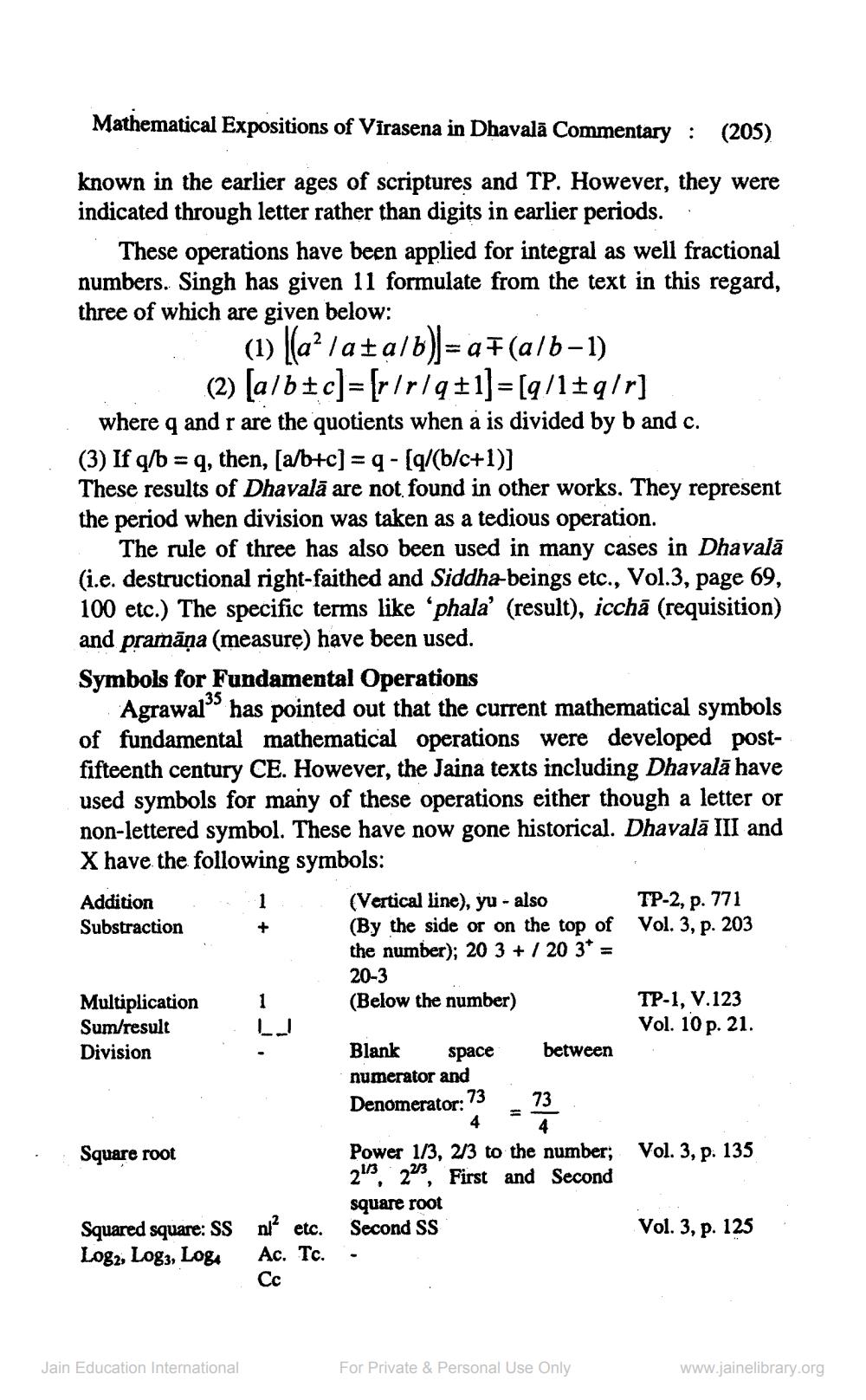________________
Mathematical Expositions of Virasena in Dhavalā Commentary : (205)
known in the earlier ages of scriptures and TP. However, they were indicated through letter rather than digits in earlier periods.
These operations have been applied for integral as well fractional numbers. Singh has given 11 formulate from the text in this regard, three of which are given below:
(1) lla? Iatalb) = a + (alb-1)
(2) [alb+c]=[rırlq+1]=[9/10q1r] where q and r are the quotients when a is divided by b and c. (3) If q/b = q, then, [a/b+c] =q - [g/(b/c+1)] These results of Dhavalā are not found in other works. They represent the period when division was taken as a tedious operation.
The rule of three has also been used in many cases in Dhavalā (i.e. destructional right-faithed and Siddha-beings etc., Vol.3, page 69, 100 etc.) The specific terms like 'phala' (result), icchā (requisition) and pramāņa (measure) have been used. Symbols for Fundamental Operations
Agrawals has pointed out that the current mathematical symbols of fundamental mathematical operations were developed postfifteenth century CE. However, the Jaina texts including Dhavalā have used symbols for many of these operations either though a letter or non-lettered symbol. These have now gone historical. Dhavalā III and X have the following symbols: Addition
1 (Vertical line), yu - also
TP-2, p. 771 Substraction
(By the side or on the top of Vol. 3, p. 203 the number); 20 3 + 1 20 3* =
20-3 Multiplication (Below the number)
TP-1, V.123 Sum/result
Vol. 10 p. 21. Division
Blank space between numerator and Denomerator:
nerator. 73
Square root
Power 1/3, 2/3 to the number; Vol. 3, p. 135 213, 22), First and Second
square root nl etc. Second SS
Vol. 3, p. 125 Ac. Tc..
Squared square: SS Logz, Log3, Loge
Cc
Jain Education International
For Private & Personal Use Only
www.jainelibrary.org




